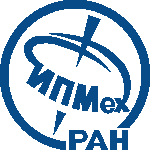
|
ИСТИНА |
Войти в систему Регистрация |
ИПМех РАН |
||
Evolution of relativistic electrons in the outer radiation belt during the 25 August 2018 geomagnetic stormтезисы доклада
- Авторы: Inostroza A., Stepanova M., Kasahara S., Higashio N., Mitani T., Antonova E., Pinto V.
- Сборник: Abstracts of 44th COSPAR Scientific Assembly, 16 July - 24 July 2022, Athens, Greece,
- Тезисы
- Год издания: 2022
- Место издания: Athens, Greece
- Первая страница: D3.4-0020-22
- Последняя страница: D3.4-0020-22
- Аннотация: The adiabatic and non-adiabatic behavior of relativistic electrons in the outer radiation belt during the very strong geomagnetic storm of 25 August 2018 are studied using data from the Van Allen Probes, and ARASE missions. In this particular event, the SYM-H index reached a minimum value of -205 nT and extremely strong substorm activity was observed during the main and recovery phases. The analysis of relativistic electron fluxes shows that this storm belongs to the first type of storms, in which an enhancement of relativistic electrons is observed during the recovery phase after a strong depletion occurs during the main phase. The maximum electron flux appears at L = 3.5, which is in excellent agreement with the Tverskaya relation. In order to study whether the adiabatic mechanisms are relevant to explain the behavior of relativistic electrons, we first analyzed the electron spectra and found that they fit well to a power-law function. For a fixed L-shell, the power-law index is conserved during the pre-storm time, increases during the main phase, and decreases during the recovery phase for L more than 3.5, but strongly increases for lower L-shells. The long time conservation of the slope of the electron spectra can be considered as an evidence of a dominant contribution of adiabatic processes, as it is difficult to explain this effect by other processes such as acceleration and losses of relativistic electrons. Nonetheless, the strong changes observed in the electron spectra slope related to the storm phases can be related to different processes leading to the electron loss or acceleration, such as the interaction with ULF waves.
- Добавил в систему: Антонова Елизавета Евгеньевна